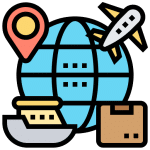
In the rapidly transforming landscape of contemporary business, the quest for operational efficiency, cost reduction, and sustained competitiveness has led organizations to explore novel strategies. One such strategic avenue gaining prominence is procurement outsourcing—a practice involving the delegation of procurement functions to external service providers.
This article delves into the intricate dynamics of the Procurement Outsourcing Market, exploring its evolutionary trajectory, key driving forces, inherent challenges, emerging trends, regional nuances, and the promising future it holds.
Table of Contents
Definition and Evolution of Procurement Outsourcing
Procurement outsourcing involves strategically delegating procurement processes to external service providers. This practice has evolved from a mere cost-saving strategy to a comprehensive approach for optimizing supply chain management. As businesses strive to streamline operations and concentrate on core competencies, procurement outsourcing has emerged as a viable solution.
Market Overview
The Procurement Outsourcing Market has experienced substantial growth, propelled by the escalating complexity of global supply chains and the pursuit of cost efficiencies. Key players in the market range from established outsourcing giants to nimble entrants specializing in procurement services. The market’s dimensions have expanded globally, with diverse service offerings catering to a multitude of industries.

Market Drivers
The propulsion of Procurement Outsourcing into the forefront of contemporary business strategies is propelled by a constellation of dynamic market drivers, each contributing its distinct influence to redefine organizational approaches. Anchored in the relentless pursuit of cost efficiency and savings, enterprises are strategically leveraging external expertise to streamline and optimize procurement processes. Simultaneously, there is a discernible paradigm shift driven by the imperative to focus on core competencies, allowing organizations to reallocate internal resources toward innovation and pivotal business functions.
Amidst the tapestry of a globalized business stage and the complexities of modern supply chains, procurement outsourcing transcends being merely strategic; it becomes an indispensable tool. It furnishes businesses not only with a global outlook but also specialized insights, essential for navigating the intricacies of international markets. Additionally, the infusion of state-of-the-art technological advancements, notably the seamless integration of artificial intelligence and automation, propels the realm of procurement outsourcing into a new era characterized by heightened efficiency and groundbreaking innovation. This section unfurls the unique fabric of market drivers, unveiling the interconnected forces propelling Procurement Outsourcing into a future defined by strategic ingenuity and operational excellence.

Cost Efficiency and Savings
The primary impetus behind the adoption of procurement outsourcing remains the pursuit of cost efficiency. Outsourcing procurement processes allows organizations to harness the expertise of specialized service providers, leading to reduced operational costs and heightened savings. This cost-effective approach enables companies to strategically allocate resources and invest in their core business functions.

Focus on Core Competencies
Amidst the expanding horizons of businesses, maintaining a laser focus on core competencies is imperative. Procurement outsourcing facilitates the delegation of non-core functions to experts, allowing internal teams to channel their efforts into strategic initiatives, innovation, and customer-centric activities. This strategic shift amplifies organizational agility and enhances overall competitiveness.

Globalization and Complex
Supply Chains
The surge of globalization has markedly increased the intricacy of supply chains. Procurement outsourcing addresses the challenges linked to managing intricate global supply networks, regulatory disparities, and diverse market demands. External service providers bring a global perspective and specialized knowledge, assisting organizations in navigating the complexities of international procurement.

Technological Advancements in Procurement
The landscape of procurement undergoes a profound transformation with remarkable technological progress, particularly in the realms of artificial intelligence (AI) and machine learning. This evolution introduces automation, data analytics, and predictive modeling, elevating the precision and efficiency of procurement activities to unprecedented levels.
Market Challenges
Embarking on the journey through the intricate landscape of the Procurement Outsourcing Market unveils a series of formidable challenges, each contributing to the nuanced dynamics of this strategic landscape. The critical realm of security and compliance concerns demands unwavering attention to shield confidential procurement data.
Overcoming resistance to change emerges as a pivotal task, necessitating the crafting of nuanced change management strategies to navigate internal hesitations successfully. Addressing the lack of standardization calls for the establishment of industry-wide norms, ensuring a uniform and scalable approach to outsourcing processes. Furthermore, the seamless integration of outsourced procurement with internal systems poses a technical puzzle, requiring deft solutions for achieving optimal operational synergy.

Security and Compliance Concerns
Despite the advantages, security and compliance persist as top concerns in procurement outsourcing. Entrusting external entities with sensitive procurement data raises questions regarding data security, confidentiality, and regulatory compliance. Organizations must implement robust contractual agreements and cybersecurity measures to effectively mitigate these risks.

Resistance to Change
The adoption of procurement outsourcing often necessitates a significant cultural shift within organizations. Resistance to change, both from employees and key stakeholders, can impede the successful implementation of outsourcing initiatives. Companies must invest in change management strategies to address concerns, communicate the benefits, and foster a collaborative environment.

Lack of Standardization
The absence of standardized processes in procurement outsourcing can result in inconsistencies and inefficiencies. Each outsourcing engagement may involve unique processes and workflows, making it challenging to achieve uniformity and scalability. Establishing industry standards and best practices can address this challenge, promoting consistency and streamlining outsourcing relationships.

Integration with Existing Systems
Integrating outsourced procurement processes with existing internal systems poses a technical challenge. Compatibility issues, data synchronization, and interoperability hurdles may arise, impacting the seamless flow of information between internal and external systems. Robust integration strategies and collaborative partnerships between organizations and service providers are essential to overcome this challenge.
Trends and Innovations
As the dynamics of procurement outsourcing continue to transform, it becomes imperative for organizations to navigate the currents of emerging trends and innovations that define the cutting edge of supply chain optimization. Delving into this section unveils the forefront of industry evolution, spotlighting the integration of artificial intelligence and machine learning into procurement processes, the paradigm shift towards sustainable procurement practices, the ascendancy of digital procurement platforms, and an increased focus on fortifying risk management strategies. Together, these trends carve a distinctive path forward for procurement outsourcing, presenting businesses with unparalleled opportunities to elevate their efficiency, transparency, and resilience in the intricate realm of procurement.
Adoption of AI and Machine Learning
The integration of artificial intelligence and machine learning in procurement processes is a transformative trend. AI-powered solutions enhance data analysis, automate routine tasks, and provide predictive insights. Procurement outsourcing providers leveraging these technologies offer clients advanced analytics, cost forecasting, and real-time decision-making support.
Sustainable Procurement Practices
Sustainable procurement is gaining prominence as organizations prioritize environmental and social responsibility. Outsourcing partners are increasingly expected to adhere to sustainable practices in the supply chain. This includes ethical sourcing, waste reduction, and adherence to environmental standards, aligning with the growing global focus on corporate social responsibility.

Rise of Digital Procurement Platforms
Digital procurement platforms are reshaping the landscape of procurement outsourcing. Cloud-based solutions, e-procurement tools, and collaborative platforms enhance communication and streamline procurement workflows. These platforms provide real-time visibility, fostering transparency and efficiency in the procurement process.
Increased Emphasis on Risk Management
The dynamic global business environment brings inherent risks to procurement processes. Outsourcing partners are now placing a greater emphasis on risk management strategies, including geopolitical risks, supply chain disruptions, and regulatory changes. Robust risk assessment frameworks and contingency planning are integral components of modern procurement outsourcing services.
Industry Verticals
Within the realm of procurement outsourcing, an array of industry verticals has embraced the strategic advantages of entrusting procurement functions to external partners. This segment delves into the distinctive applications of procurement outsourcing across pivotal sectors, unveiling its impact on Manufacturing, Healthcare, Retail, and Consumer Goods, as well as the dynamic landscape of IT and Telecom. Each vertical unfolds a distinct narrative of challenges and opportunities, underscoring the flexibility and value that procurement outsourcing injects into businesses spanning a diverse spectrum of industries.

Procurement Outsourcing in Manufacturing
Manufacturing companies leverage procurement outsourcing to optimize the sourcing of raw materials, reduce production costs, and enhance supply chain efficiency. External partners specializing in manufacturing procurement bring industry-specific expertise, enabling manufacturers to stay competitive in a rapidly changing market.
Procurement Outsourcing in Healthcare
In the healthcare sector, procurement outsourcing plays a crucial role in managing the complexities of medical supply chains. Outsourcing allows healthcare organizations to focus on patient care while external providers handle procurement processes, ensuring a seamless and cost-effective supply of medical goods and services.


Retail and Consumer Goods Procurement Outsourcing
Retailers and consumer goods companies benefit from outsourcing procurement to meet the demands of fast-paced markets. Procurement outsourcing providers in this sector assist in sourcing high-quality products, negotiating favorable terms with suppliers, and adapting to changing consumer preferences.
IT and Telecom Procurement Outsourcing
The IT and telecom sector relies on efficient procurement processes to stay ahead in a competitive landscape. Outsourcing procurement in this industry streamlines the acquisition of technology, hardware, and services, allowing organizations to rapidly adapt to technological advancements and market demands.

Regional Analysis
Embarking on our journey through the intricate tapestry of the Procurement Outsourcing Market, we pivot our focus to the pivotal realm of regional dynamics. Unveiling the distinctive nuances of procurement outsourcing across different continents, we uncover a narrative shaped by varied influences—market trends, adoption rates, and strategic considerations. The regional analysis unfolds, shedding light on the specific attributes that define procurement outsourcing in North America, Europe, Asia-Pacific, Latin America, and the Middle East and Africa. Within each geographic realm, a unique interplay of challenges, opportunities, and driving forces contributes to the rich and diverse fabric of the global procurement outsourcing landscape.
A. North America
The North American region stands as a significant player in the procurement outsourcing market, driven by the presence of multinational corporations and a mature outsourcing ecosystem. Organizations in North America leverage procurement outsourcing to gain a competitive edge, enhance efficiency, and navigate complex supply chain dynamics.
B. Europe
Europe has witnessed a steady growth in procurement outsourcing, with organizations seeking strategic partnerships to address regional variations and regulatory complexities. The European market emphasizes the adoption of sustainable procurement practices and the integration of digital platforms to enhance collaboration and transparency.

C. Asia-Pacific
The Asia-Pacific region is a burgeoning market for procurement outsourcing, fueled by rapid economic growth and increased globalization. Organizations in Asia-Pacific leverage outsourcing to access specialized expertise and navigate diverse cultural and regulatory landscapes. The adoption of digital procurement platforms is on the rise in this region.
D. Latin America
Latin America presents opportunities for procurement outsourcing, with organizations seeking cost-effective solutions to streamline supply chain processes. The region’s market growth is influenced by the adoption of technology, regulatory reforms, and the expansion of outsourcing services in key industries.
E. Middle East and Africa
The Middle East and Africa exhibit a growing interest in procurement outsourcing, driven by a focus on economic diversification and globalization. Organizations in this region leverage outsourcing to enhance operational efficiency, reduce costs, and gain access to global procurement networks.
Competitive Landscape
In the dynamic arena of procurement outsourcing, understanding the competitive landscape is paramount for unraveling the industry’s evolution. This segment, devoted to the Competitive Landscape, unravels the nuanced interplay of major industry players and their market share, navigates through the strategic intricacies of mergers and acquisitions, investigates the collaborative tapestry woven through strategic partnerships and alliances, and spotlights the vitality brought by emerging players and start-ups. Join us as we embark on an exploration of the strategic chessboard that shapes the competitive landscape of procurement outsourcing.

The competitive landscape of the procurement outsourcing market features established players and emerging entrants. Key players include global outsourcing firms, niche providers, and technology-driven startups. Market share analysis highlights the dominance of certain players in specific regions and industry verticals.
Mergers and Acquisitions
Mergers and acquisitions play a significant role in shaping the competitive landscape of procurement outsourcing. Strategic alliances and acquisitions enable companies to broaden their service offerings, enter new markets, and strengthen their position in the evolving outsourcing ecosystem.
Strategic Partnerships and Alliances
Strategic partnerships and alliances between outsourcing providers and client organizations are essential for mutual success. Collaborative efforts enhance innovation, address industry-specific challenges, and create synergies that contribute to the growth of both parties.
Emerging Players and Start-ups
The procurement outsourcing market sees the emergence of startups and innovative players leveraging technology to disrupt traditional procurement practices. These entities often specialize in niche services, digital platforms, or specific industry verticals, bringing agility and fresh perspectives to the market.
Regulatory Environment
Embarking on the journey of procurement outsourcing extends beyond mere operational enhancements and cost reductions; it necessitates a nuanced grasp of the regulatory terrain governing these endeavors. This segment, dedicated to the Regulatory Environment, unravels the complexities surrounding Procurement Regulations, delving into the nuances of Compliance and Legal Considerations. Furthermore, it scrutinizes the profound effects of Global Trade Policies on the intricate tapestry of procurement outsourcing. An exhaustive exploration awaits, providing a distinctive perspective on the regulatory framework that molds the choices and tactics of entities involved in procurement outsourcing.
Overview of Procurement Regulations
Procurement outsourcing operates within a regulatory framework that varies across regions and industries. Understanding and complying with procurement regulations is crucial for both outsourcing providers and client organizations to mitigate legal risks and ensure ethical practices.
Compliance and Legal Considerations
Ensuring compliance with local and international laws is a fundamental aspect of procurement outsourcing. Contracts and service agreements must align with legal requirements, and outsourcing providers must demonstrate adherence to ethical standards and industry regulations.
Impact of Global Trade Policies on Procurement Outsourcing
Global trade policies, geopolitical developments, and trade agreements influence the procurement landscape. Organizations engaged in procurement outsourcing must stay abreast of international trade dynamics to navigate tariff implications, trade restrictions, and geopolitical risks that may impact the supply chain.

Future Outlook
Peer into the horizon of the Procurement Outsourcing Market, and discover a panorama rich with promising opportunities, nuanced growth predictions, and a kaleidoscope of challenges and prospects awaiting market participants. In a realm where industries perpetually evolve, harmonizing with the fluid dynamics of the global business stage, the future of procurement outsourcing unveils an elaborate canvas of possibilities. Within this realm, we meticulously analyze the fundamental components of the impending outlook, unfurling the threads that will intricately craft the narrative of strategies, technological advancements, and collaborative endeavors in the unfolding years.
Emerging Opportunities in the Procurement Outsourcing Market
The future of procurement outsourcing holds exciting opportunities, including the expansion of digital procurement platforms, the integration of blockchain for enhanced transparency, and the further adoption of AI and machine learning. Emerging technologies and evolving market dynamics present opportunities for organizations to enhance efficiency and competitiveness through strategic outsourcing.
Predictions for Market Growth
Market projections indicate continued growth in the procurement outsourcing sector, driven by the increasing complexity of global supply chains, technological advancements, and the need for agile and cost-effective procurement solutions. The market is expected to witness further consolidation and specialization as players strive to meet evolving client demands.
Challenges and Opportunities for Market Participants
The future presents both challenges and opportunities for market participants. Challenges include addressing security concerns, adapting to regulatory changes, and ensuring seamless integration with evolving technologies. Opportunities lie in leveraging innovations, expanding service offerings, and establishing collaborative partnerships to create value for clients.
In conclusion, navigating the dynamics of the Procurement Outsourcing Market requires a nuanced understanding of evolving trends, challenges, and opportunities. Organizations embracing procurement outsourcing stand to gain significant advantages in terms of cost efficiency, focus on core competencies, and access to global expertise. As the market continues to evolve, staying informed about technological advancements, regulatory changes, and emerging best practices will be crucial for businesses seeking to thrive in the dynamic world of procurement outsourcing.

Frequently Asked Questions
1. How Does Procurement Outsourcing Differ from In-House Procurement?
Procurement outsourcing involves delegating procurement activities to external service providers, allowing businesses to tap into specialized expertise. In-house procurement, on the other hand, is conducted by the organization’s internal team. The key distinction lies in whether procurement functions are managed internally or externally.
2. What Types of Services are Typically Outsourced in Procurement?
Procurement outsourcing encompasses a range of services, including strategic sourcing, vendor management, purchase order processing, and supplier relationship management. The specific services outsourced depend on the business’s needs and objectives, with some organizations opting for end-to-end outsourcing and others choosing selective outsourcing for specific procurement functions.
3. How Does Procurement Outsourcing Contribute to Cost Savings?
Procurement outsourcing contributes to cost savings through various avenues. External providers often have established supplier networks, enabling them to negotiate better terms and prices. Additionally, the economies of scale achieved by outsourcing can lead to reduced operational costs, increased efficiency, and ultimately lower procurement expenses for the client.
4. What Risks Should Businesses Consider in Procurement Outsourcing?
While procurement outsourcing offers numerous benefits, it is essential to be aware of potential risks. These may include supply chain disruptions, data security concerns, and challenges in maintaining control over processes. A comprehensive risk management strategy is crucial to mitigate these potential pitfalls and ensure a successful outsourcing partnership.
5. How Can Businesses Select the Right Procurement Outsourcing Partner?
Choosing the right procurement outsourcing partner is a critical decision. Factors to consider include the provider’s experience in the industry, their track record in delivering similar services, technological capabilities, and their ability to align with the client’s goals and values. Thorough due diligence, client references, and a well-defined selection process are integral to making an informed choice in selecting a suitable outsourcing partner.
